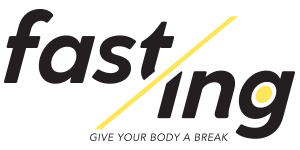Medical & Therapeutic Fasts

The Big Idea
Our bodies are designed to heal and a guided medical fast can be a healthy therapeutic reset.
Our society is held captive by the concept that better results come from more action. We have to take more pills to be healthy; we have to do more exercise (cardio, cardio, cardio!) for fat loss. The idea that you can achieve far greater health while technically doing nothing is incomprehensible to most people. But that’s exactly what medical/therapeutic fasting is – eating nothing. And it’s regarded as one of the safest and most effective treatment methods for literally dozens of diseases.
Therapeutic fasting has been used since ancient Greek physicians, such as Hippocrates and Galen, and it continues to be used by the modern medical establishment for the treatment of diseases ranging from obesity to cancer and even diabetes. Fasting is generally recognized as being safe by doctors, and has been used effectively for durations as short as 14 hours all the way up to a year.
What it is
Though there are different medical/therapeutic fasting methods, they all share the concept of abstaining from or restricting food for the treatment of medical conditions. Longer fasts are often performed under the guidance of a doctor or fasting practitioner who monitors vitals and progress. Medical/therapeutic fasts can include
- prolonged water fasts
- fasting mimicking diets
- and even time-restricted eating
But therapeutic fasts aren’t solely about not eating food. Many of the benefits come in the days after a patient breaks his or her prolonged fast, when stem cell counts often double, and the body is able to rejuvenate after its cleansing period.
Scientists have observed that fasting shrinks the body’s organs and tissues. This happens when organelles called phagophores dissolve and recycle old and useless parts of a cell – a process known as autophagy. Once the body’s damaged cells have been cleaned out and food is reintroduced, organs and tissues regain their lost volume with healthy and youthful cells, and health is restored.
Benefits
Potentially reverses autoimmune diseases
Research on mice has shown that therapeutic fasting reduces the severity of autoimmune symptoms, with a full 20% of the experimental group exhibiting a full remission of symptoms. Research on humans show that fasting can be beneficial for Rheumatoid Arthritis and other autoimmune diseases. Scientists think this effect is due to an increase in immune system stem cells, and also a reduction in inflammation.
Increases effectiveness of cancer treatment
During periods of food shortage, cells favor repair and maintenance over growth. Scientists think this could have been nature’s way of improving our odds of survival. This ‘repair and maintenance’ effect of fasting has been proven to increase the resilience of healthy cells in chemotherapy treatment. Studies also show that fasting may increase the effectiveness of chemotherapy treatment.
Diabetes management
Therapeutic fasting is demonstrated to reduce all markers of diabetes and metabolic syndrome, including blood glucose levels, insulin levels, cholesterol, and weight. This finding has been replicated in many human and animal studies, and results have come from fasting as little as 14 hours per day. Scientists have reported improved diabetes symptoms independent of weight loss, too.
Weight loss
Weight loss is one of the most common applications for medical/therapeutic fasting. Whereas calorie restriction tends to diminish metabolism, fasting (and fasting mimicking diets) are proven to burn fat without negatively impacting metabolic rate. This frequently leads to long-term weight loss and diminished weight-loss rebounds
Cost
Compared to bariatric surgery – stomach stapling, – prescriptions, and other medical interventions, therapeutic fasting is very inexpensive. Though there are treatment centers where you can spend thousands of dollars for a luxury experience, standard fasts typically cost nothing. (And you’re even saving money on food and drinks!)
Risks
While there certainly are risks to medical/therapeutic fasts, these are nothing to be concerned about if you prepare for the fast and consult your physician. Typical risks include the following:
- dehydration
- electrolyte imbalance
- hypovolemia
- fatigue
- dizziness
- feelings of fainting
- headache
- and hypertension.
People commonly experience irritability and low-energy during prolonged fasts because the body is transitioning from using carb-containing foods for energy to just your body fat. That said, some therapeutic fasts can be as little as 14 hours in duration, with no risk at all.
How to Do it
Therapeutic fasts are best performed under the guidance of a physician or trained fasting practitioner. You can either enter a fasting treatment center, where your fasting itinerary is made for you. Or you can perform the fast at home.
Time-restricted eating
Time-restricted eating (TRE) is a therapeutic fasting method shown to improve diabetes, weight, and cardiovascular health. It’s done by limiting your eating to the daytime and by fitting all your meals within an 8-12 hour window. Typical TRE fasts last from after dinner to sometime in the morning or afternoon. For example, you’d eat your first meal at 10:00 am, the stop eating at 6:00 pm.
Water fasts
To perform a therapeutic water fast, you’ll only be allowed to consume water. This typically lasts from 1-5 days, and should not be undertaken without careful preparation and/or supervision. You should follow these precautions:
- Spend at least a week practicing shorter, daily fasts of 12-16 hours before your fast.
- Avoid processed foods and eat smaller, lighter meals in the days before your fast – soups, salads, fruits and vegetables, and juices. This prepares your system for a smooth transition to a full fast.
- Make sure to drink ample amounts on your fasting days. (The body gets 20-30% of its water from food, so you’ll want to make up for that in liquid water.)
- Do light exercise such as walking or hiking, and avoid heavy lifting or intense exercise like running or crossfit.
- Replenish electrolytes with a multimineral supplement, and add a pinch of sea salt to your water in the mornings.
- End your fast if you feel sick or unwell. (Mild symptoms such as headaches or fatigue should be expected, but not sickness.
- Break your fast with light foods such as rice, bread, soup, or fresh-squeezed fruit and vegetable juice. Wait till the next day to introduce heavier foods like meat.
List of Top Science or Studies:
Therapeutic fasting and cancer, women’s health, and metabolic health
Prolonged fasting promotes stem cell development
Therapeutic fasting reduces autoimmune symptoms
Fasting enhances cancer treatments
Therapeutic fasting for diabetes management
Fasting as an alternative to insulin in people with type 2 diabetes
Time-restricted eating reduces metabolic syndrome
TRE improves insulin sensitivity independent of weight loss
Safety, Health Improvement And Well-Being During A 4 To 21-Day Fasting Period.
Don't know which fast is right for you? Read this article

Intermittent Fasting (IF)
Strategy that combines periods of eating with periods of fasting into a regular schedule.
Fasting With Water
The purposeful abstention of all food – solid or liquids – except for water.
Dry Fasting
DF is the abstinence of food and water. Total. Abstinence. Dry!
Medical & Healing Fast
Medical/therapeutic fasting is – eating nothing for medical advancements and natural healing.
Time Restricted Eating
The philosophy that aligns mealtimes with your natural circadian rhythm.
Fasting With Juice
Combine all your fruits & veggies into delicious juice for a select period of time.
Ketogenic Fasting
Combines keto dieting principles with routine periods of fasting for enhanced fat loss.
Spiritual & Religious
Spiritual and religious fasts have been part of almost every culture and religion throughout recorded history.
Prolonged Fasting
Fasting for 48 hours and over to
achieve health benefits and clarity.
Fasting With Food
Also known as Fasting Mimicking Diet (FMD), eating specific macronutrients to keep your body in a fasting state.
Alternate Day Fasting
The idea behind ADF is simple – eat one day, don’t eat the next.
Detox & Cleanse Programs
Focus on improving liver health, the main detox organ, and nearly all of them enhance elimination and digestion.

















